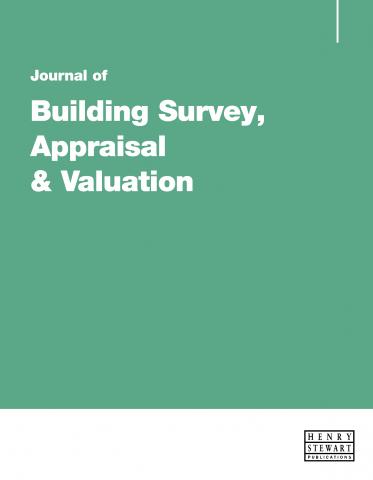“Journal of Digital and Social Media Marketing provides a unique blend of practitioner and academic expertise to offer the reader an in-depth understanding of digital marketing case studies and authoritative opinion. Each article passes a peer-review prior to publication, by leaders in the industry from around the globe, ensuring the reader gets the best-of-the-best in digital marketing insights.”
The valuation of high-risk residential buildings and the role of EWS1
Click the button below to download the full text of the article.
Abstract: In response to the tragic fire at Grenfell Tower in June 2017, the UK Government proposed regulatory reform with the purpose of ensuring residents feel safe and are safe in their own homes. This paper examines the advice that has been given by the government and traces how this advice has had disastrous consequences for the mortgage lending market for flats located in high-risk residential buildings. This has been compounded by the unfortunate effect that the EWS1 form has had on the same market. The paper opens with a review of the independent expert advisory panel set up to provide advice and make recommendations to the Secretary of State for Housing, Communities and Local Government on urgent building safety measures that should be carried out to high-risk residential buildings with aluminium composite material (ACM) external wall cladding. The panel formulated the much-criticised advice note 14 which provided guidance to building owners to take general fire precautions with non-aluminium composite Material (non-ACM) cladding in their external wall systems to ensure that the systems are safe. Although advice note 14 was superseded in January 2020 by the Ministry of Housing, Communities and Local Government’s consolidated advice document, the binary approach to defining safe external wall systems is still adopted. This has caused unintended consequences for the valuation of flats in high-risk residential buildings as many valuation surveyors take the position that if compliance with the consolidated advice document cannot be demonstrated, then the flats within that building will have a valuation of £nil. The industry’s response has been to produce the EWS1 form which was intended to unblock the market. This aim has not been achieved, however, and the paper details why the EWS1 form has, to date, failed and suggests ways of restoring confidence within the market.
Keywords: valuation, Grenfell Tower, fire safety, cladding, EWS1
Steve Phillips BSc MSc MPhil (Cantab) PGCert EngD FRICS MCIOB FCABE AFHEA has worked in the UK construction industry since 1978. He is a chartered building surveyor, a chartered building engineer and a chartered construction manager. He has held a number of senior positions within the industry, including being the managing director of a specialist dispute resolution building surveying practice and executive board member of a major social housing landlord organisation. Having completed an engineering doctorate at Loughborough University and a MPhil in engineering for sustainable development at Cambridge University, he is now a full-time academic at Northumbria University where his research interests are fire safety and the golden thread of information including traceability; construction informatics; and best value procurement in the post-Hackitt era.



